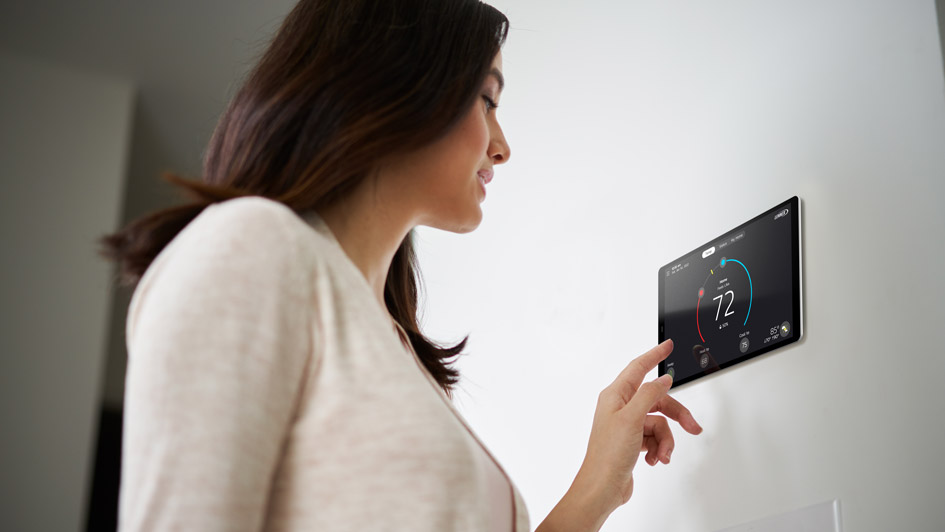
As the weather begins to cool off, you are probably concerned about how you’ll prepare your heating and cooling. After all, HVAC bills can make up a large piece of your monthly electric bill. To try and find ways to save, some people look closely at their thermostat. Could there be a setting they should use to improve efficiency?
Most thermostats include both a ‘Fan’ or ‘Fan On’ setting. But if the fan is going during a normal cycle, what can the fan setting provide for an HVAC system? This guide will help. We’ll review just what the fan setting is and when you can use it to reduce costs during the summer or winter.
What Is the Fan Setting on My Thermostat?
For most thermostats, the fan setting signifies that the air handler’s blower fan remains on. A few furnaces can operate at a low level with this setting, but in most cases heating or cooling isn’t being generated. The ‘Auto’ setting, conversely, will run the fan over a heating or cooling cycle and turn it off when the cycle is complete.
There are benefits and drawbacks to switching on the fan setting on your thermostat, and the ideal option {will|can|should]] depend on your distinct comfort preferences.
Advantages to using the Fan/On setting:
- You can keep the temperature throughout your home more consistent by allowing the fan to keep generating airflow.
- Indoor air quality can increase since continuous airflow will keep forcing airborne particles through the air filter.
- A smaller number of start-stop cycles for the blower fan helps extend its life span. As the air handler is typically connected to the furnace, this means you can prevent the need for furnace repair.
Disadvantages to utilizing the Fan/On setting:
- A continuous fan can add to your energy costs slightly.
- Nonstop airflow could clog your air filter in a shorter amount of time, increasing the frequency you will want to replace it.
{Choosing Between|Should My Thermostat Be on|Which Setting for My Thermostat? Fan or Auto in Each Season
In the summer, warm air can persist in unfinished spaces including the attic or an attached garage. If you use the fan setting, your HVAC system may pull this warm air into the rest of your home, compelling the HVAC system to work harder to preserve the set temperature. In extreme heat, this can lead to needing AC repair more often as wear and tear gets worse.
The reverse can occur over the winter. Cooler spaces such as a basement will hold onto cooler air, which may eventually drift into the rest of your home. Leaving the fan setting on could pull more cold air upward, increasing the amount of heating you need to remain warm.
If you’re still trying to determine if you should switch to the fan/on setting, keep in mind that every home and family’s comfort needs are different. Leaving the HVAC system’s fan on might work for you if:
Someone in your household suffers from allergies. Allergies and similar respiratory conditions can be hard on the family. Leaving the fan on should help to enhance indoor air quality, helping your family breathe easier.
Your home has hot and cold spots. Lots of homes deal with persistent hot and cold spots that quickly evolve to a temperature different from the rest of the house. The fan setting can help limit these changes by consistently refreshing each room’s ventilation.
